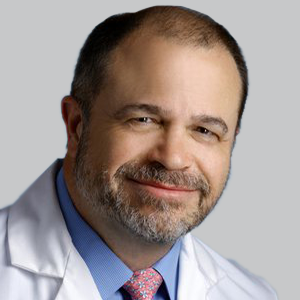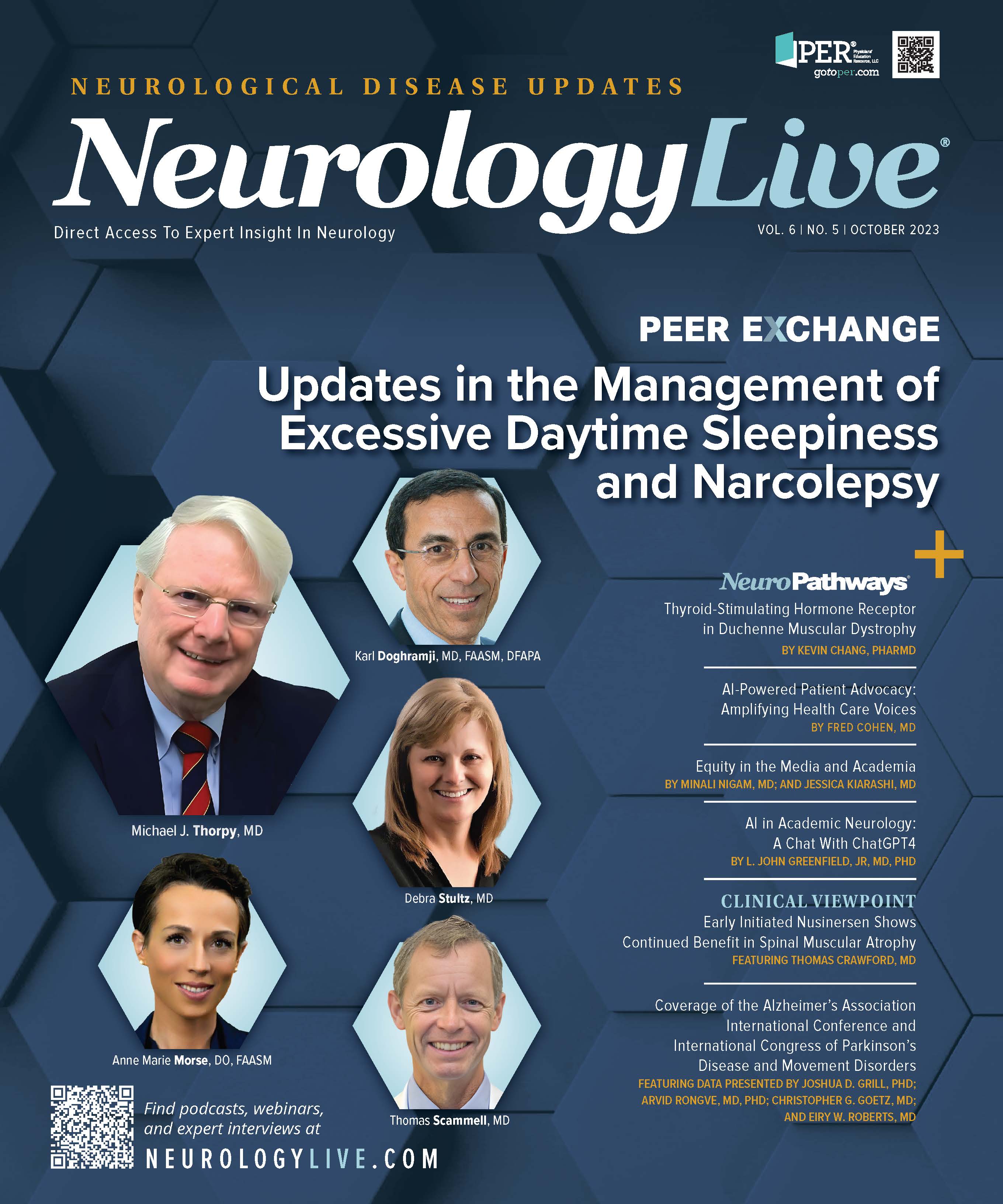News
Article
NeurologyLive
NeuroVoices: Thomas Crawford, MD, on Continued Benefit of Early Initiated Nusinersen in SMA
Author(s):
The pediatric neurologist at Johns Hopkins Medicine provided clarity on the recently published 5-year update of the NURTURE study, and the importance of treating spinal muscular atrophy at its presymptomatic stages.
Thomas Crawford, MD

Nusinersen (Spinraza; Biogen), the first FDA-approved therapy for spinal muscular atrophy (SMA), is an antisense oligonucleotide that promotes expression of functional survival motor neuron (SMN) protein by altering pre-messenger RNA splicing of SMN2. The NURTURE trial (NCT023866553) is an ongoing study evaluating the safety and efficacy of the therapeutic in infants likely to develop SMA type 1 or 2 who initiated treatment before onset of overt clinical signs or symptoms of SMA.
Investigators recently published an update to the study in Muscle & Nerve, with results demonstrating the continued benefit of nusinersen for up to 5 years of treatment. At the end of the analysis, all children, which included 15 with 2 SMN2 copies and 10 with 3 SMN2 copies, were alive, with none discontinuing the trial or treatment. No additional children utilized respiratory intervention since the prior data cut at 3 years. All 2-copy children achieved sitting without support, and most (14 of 15) achieved walking with assistance or walking alone (13 of 15).
Led by Thomas Crawford, MD, a pediatric neurologist at Johns Hopkins Medicine, the results demonstrated the value of early treatment, durability of treatment effect, and favorable safety profile after 5 years of nusinersen. As part of a new iteration of NeuroVoices, Crawford discussed the greatest takeaways from the trial, including the significance of having 5-year data on a therapeutic for SMA, considering the natural history of the disease. Additionally, he spoke on the complexities with initiating a treatment in the days after an SMA diagnosis has been finalized.
Among your findings, what are the greatest take-home points the clinical community should be aware of?
Thomas Crawford, MD: The major issues are three-fold. First, the benefits are durable. That we kind of expected, but we had not proven. This proves that this is a disease modifying therapy, and not a transient therapy. Number two, because it's a disease modifying therapy, we must get this therapy into people as quickly as possible. It's essential that—especially with the most severely affected babies, the ones with two copies of SMN2—damage has been done at the time of birth. The longer we take until we get it, the more damage can be done. It produces a substantial difference in their outcome time.
The third thing is that because damage has been done, before we even can identify it, the most subtle features of the clinical exam, the laboratory, and other measures are instructive. It turns out that the previous idea that we called pre symptomatic or asymptomatic baby is not the real truth. It doesn't take a lot of motor neuron tissue or strength to be a cute baby. It's pretty clear that when we looked carefully at the inclusion criteria, which were much broader in in the nusinersen trials than in the later trials of the other SMN-enhancing therapies, those broader definitions included babies that were presymptomatic that had neurodegeneration going on that we didn't know about at the time. In a retrospective read, it turns out that the outcomes in all three of the trials of the unaffected or presymptomatic babies are quite similar. If we sort of take that retrospective [look], if we justify their inclusion criteria, it looks like it's the same outcome for all three.
Considering we now have 3 approved therapies, are the goals of treating SMA starting to shift?
This is sort of outside the NURTURE paper, but there is some sense that babies that used to die, are probably not as normal as we thought they were. They were able to get through infancy and toddler years, and we're now beginning to see some hint that there may be a broader neurologic range of other difficulties with learning and language that needs to be looked at much more carefully. We couldn't have seen this before now that we're at five years. Here at Hopkins, I held 72 babies that went on to die. Many of them, I was holding them as they were dying. I was a hospice doc, and now to be able to talk about the survivals is just beyond belief. Now that the most severe ones are affected, we're beginning to worry about other broader areas of neurologic function that we didn't even know what to look for it beforehand. We're not done, we got more to do on this on this area.
How can the clinical community, neurologists included, ensure that we’re locating and effectively treating patients early?
Right now, we're advantaged by the fact that 49 of 50 states have a newborn screening program. They will pick up 95% of babies that are destined to have this malady. This number is probably a little higher than that as 5% of individuals with SMA have a kind of mutation in SMN1 that's not picked up on newborn screening. One of the fears I have is that the 5% are going to be evaluated by doctors who think that SMA has been solved, and it's all been cleaned out. I suspect those that diagnosis will be delayed in that smaller group of kids. We need to keep up the vigilance for them.
The more important thing is that in the real world, these therapies are frightfully expensive. Consequently, there's a whole series of appropriate barriers to spending that many resources on them. On the other hand, for this therapy in particular, we need to break down the walls of getting therapies to them. Various states will inform whoever the physician was that's in their protocol anywhere from as early as day 4 [days] to 10 or 12. That's a lot of time in this world. When you get the result, you must repeat the results—because you have to have two tests to do it—that makes it another 3 to 5 days. Then, the process of getting the infrastructure necessary to get it paid for where it's going to be delivered can take anywhere from a week to a month. That time is something folks are best served by setting up in advance and trying to get the pathways to the insurance companies.
One of the problems we have is that babies don't even have an insurance company before 2 or 3 months of age. If you try to call an insurance company and say, "Hey, your kid is insured, he’s going to have to have this million-dollar therapy." They respond, "who are you talking to? We don't see you on our registry." Then you have to talk to another guy that you can't talk to, except under some indirect manner. Those are critically important days. Setting up in advance who you're going to call at the insurance companies, trying to get the back door, is going to be an important thing. We here at Hopkins have the advantage of have a pretty good infrastructure. All the major carriers, we know their back door. I don't imagine that everybody has that. That's an area that we can try to solve things. Time is motor neurons in these things.
One note, for the 3-copy kids, we do have a little bit of time. I want to focus our energy and urgency on places where it matters, so that we don't squander it. The 3-copy kids need to be treated quickly, but it's not a day-by-day thing. You probably have a matter of a few weeks to get it right.
Transcript edited for clarity. Click here for more iterations of NeuroVoices.
REFERENCE
1. Crawford TO, Swoboda KJ, De Vivo D, et al. Continued benefit of nusinersen initiated in the presymptomatic stage of spinal muscular atrophy: 5-year update of the NURTURE study. Muscle & Nerve. 2023;68(2):157-170. doi:10.1002/mus.27853





